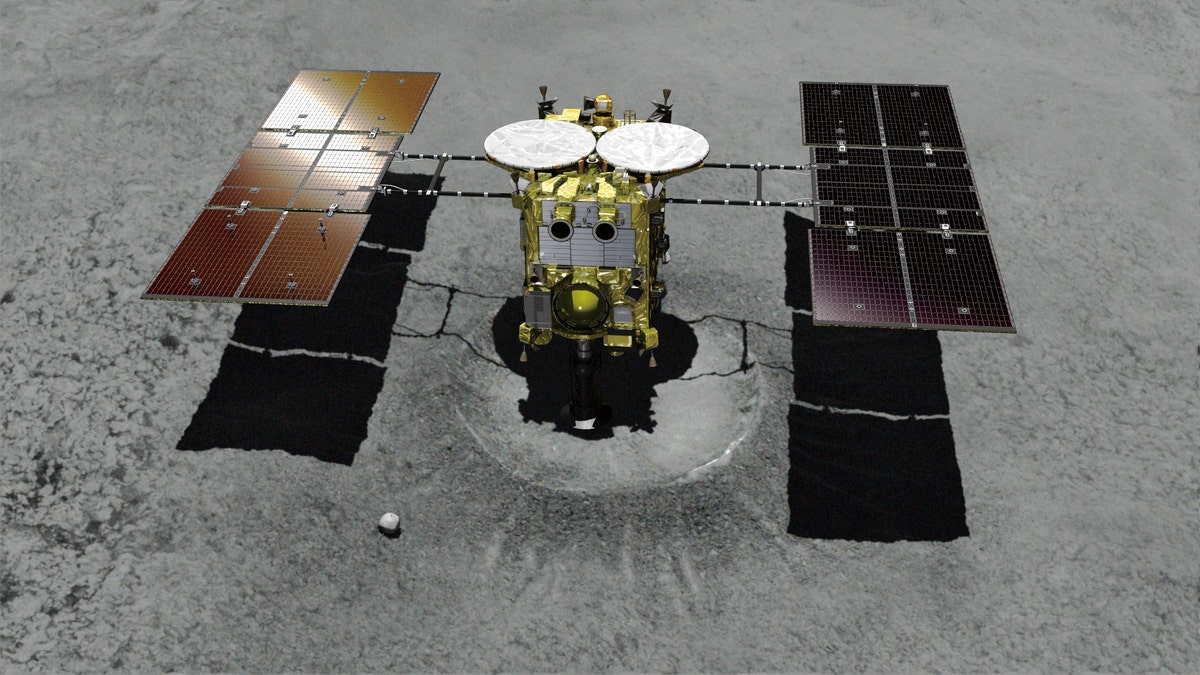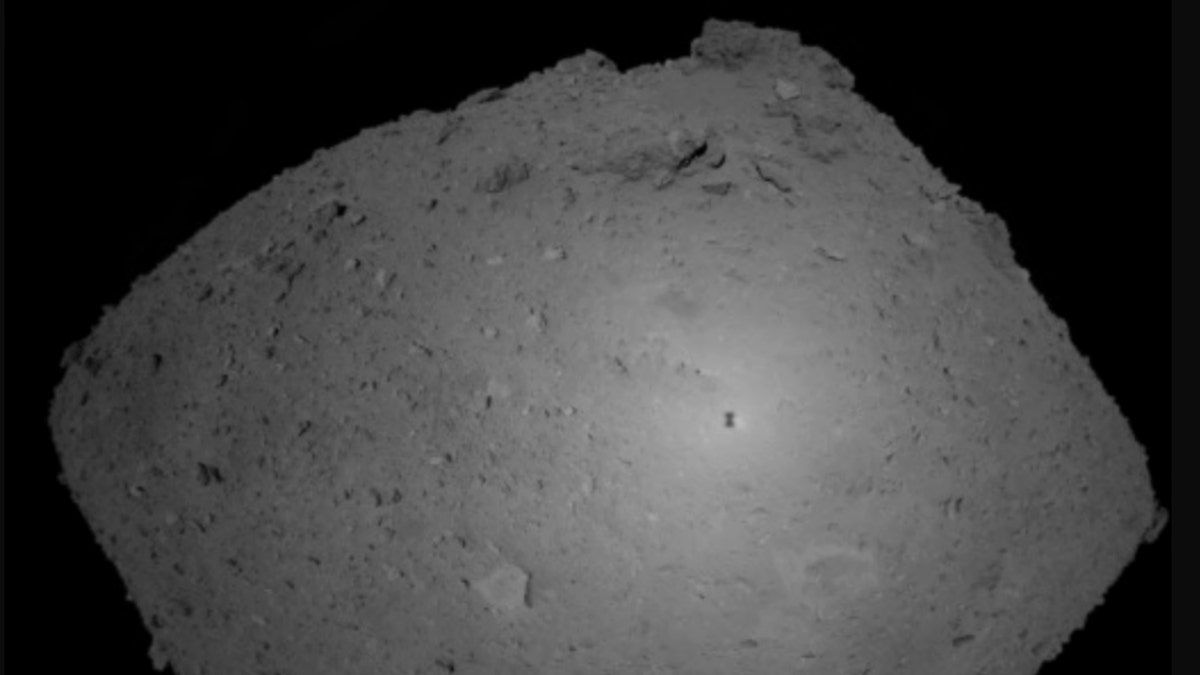
An illustration of the Japanese unmanned spacecraft Hayabusa2 approaching asteroid Ryugu. (JAXA via AP, File)
The Japan Aerospace Exploration Agency's (JAXA) Hayabusa2 spacecraft will briefly touchdown onto asteroid Ryugu Thursday evening, firing a scientific research “bullet” into the space rock.
During the touchdown, which will last just a few seconds, the unmanned probe will use a projector device to shoot the “bullet” into the asteroid, blowing up material from beneath the surface. If all goes successfully, the craft will then collect samples that would eventually be sent back to Earth. Thursday’s attempt is the first of three such touchdowns planned.
The spacecraft is expected to touch down on the space rock around 6 p.m. ET.
SPACE 'DUMPLING' RENDEZVOUS: JAPAN'S HAYABUSA 2 SPACECRAFT ARRIVES AT ASTEROID RYUGU
The brief landing will be challenging, given the uneven and boulder-covered surface. Hayabusa2 is aiming for a 20-foot diameter circle to avoid obstacles. Space agency controllers will direct its approach until it is 1,600 feet above the asteroid's surface, after which it will be on its own because it takes 20 minutes for commands from Earth to reach the craft.

A similar scientific research 'bullet' to the one that will be fired into asteroid Ryugu. (JAXA)
Launched on Dec. 3, 2014, Hayabusa2 arrived at Ryugu on June 27, 2018, when the asteroid was almost 170 million miles from Earth. The spacecraft traveled almost 2 billion miles to reach the space rock.
In September Hayabusa2 lowered two MINERVA-II1 rovers onto space rock Ryugu.
STUNNING ASTEROID PHOTOS CAPTURED BY TINY ROVERS ON SPACE ROCK'S SURFACE
Stunning images taken by the rovers revealed the surface of the “dumpling-shaped” asteroid, which has a diameter of just 2,953 feet.

This Oct. 25, 2018, image provided by the Japan Aerospace Exploration Agency (JAXA) shows asteroid Ryugu. (JAXA via AP)
Hayabusa2 is expected to leave Ryugu at the end of 2019 and return to Earth around the end of 2020.
The spacecraft is the successor of JAXA’s Hayabusa, which landed on asteroid Itokawa in November 2005. Despite being dogged with problems, the mission collected a number of asteroid samples, which returned to Earth with Hayabusa in June 2010.
NASA MAKES AMAZING DISCOVERY ON ASTEROID BENNU
NASA is also conducting amazing asteroid research. The space agency’s OSIRIS-REx spacecraft reached asteroid Bennu on Dec. 3, 2018 after traveling more than 1 billion miles through space.
The asteroid may provide answers to the origin of our solar system, according to NASA.
OSIRIS-REx, which stands for Origins, Spectral Interpretation, Resource Identification, Security-Regolith Explorer, launched in September 2016 from Cape Canaveral Air Force Station.
CLICK HERE TO GET THE FOX NEWS APP
The spacecraft is now surveying the space rock from orbit, recently helping scientists identify water locked inside the asteroid’s clay. The probe is scheduled to briefly touch the asteroid with a robotic arm in July 2020 and retrieve a sample that will be returned to Earth in September 2023.
Fox News’ Jennifer Earl, Chris Ciaccia and the Associated Press contributed to this article.
Follow James Rogers on Twitter @jamesjrogers




















